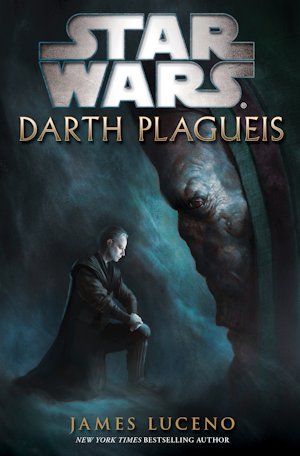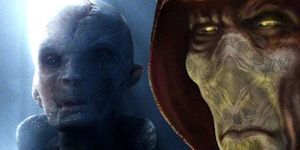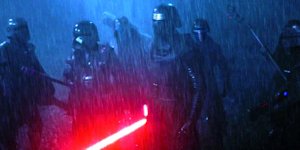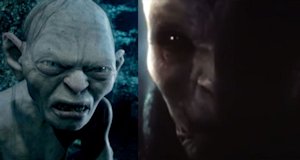Notes from Darth Plagueis
 | | Why the book isn't called "The Tragedy of Darth Plagueis the Wise" I'll never understand |
One of the most intriguing scenes in Star Wars: Episode III: Revenge of the Sith is when Supreme Chancellor Palpatine, soon-to-be Emperor, tells Anakin the "Tragedy of Darth Plagueis the Wise." Though he never comes out and says it, it is heavily implied that Palpatine, as a Sith apprentice to Darth Plagueis, killed his master shortly after Plagueis uncovered some of the greatest secrets of life, death, and the Force. Further, he implies with all but a wink that Anakin himself was created using "unnatural" powers of the Force. Palpatine uses this story to push Anakin over the edge, overstating the case that, with Sith sorcery, he could keep his loved ones safe from the specter of death itself.
In the context of the films alone, this story puts a lot of pieces into place. It offers a vague explanation for Anakin's apparent immaculate conception; it gives Palpatine a worthy backstory by explaining how he came to be a Sith Master; it finally pays off on Anakin's exaggerated fear of losing his loved ones that has been pretty much his only character trait (aside from an infantile-level infatuation with Natalie Portman) since The Phantom Menace; it offers a glimpse into the ideological differences that separate the Sith and the Jedi that go beyond simple morality; etc. By itself, it doesn't even require any elaboration. I daresay it is an exceptionally rare instance in the prequels of good, efficient writing.
Last year, when Star Wars: Episode VII: The Force Awakens was released in theaters, interest in the story of Darth Plagueis was renewed by the enigmatic appearance of a new Emperor-like big bad in the Star Wars universe: Supreme Leader Snoke. Many fans believe that Snoke is Darth Plagueis, and offer several bits of evidence to support this assertion, such as the similarities in musical score between Snoke's scenes and the Darth Plagueis scene, the assumption that if any Sith Lord could cheat death and return so many years after the original stories, it would be Plagueis, the wounds and scars on Snoke's face that are consistent with extended universe descriptions of Plagueis, etc. Then again, there is also evidence to the contrary, such as the fact that Snoke is not a Muun, the alien species Plagueis belongs to, along with the fact that it has been denied by writer Lawrence Kasdan, director J.J. Abrams, and actor Andy Serkis. An early draft of Snoke was even female.
 | | Honestly, I've been a fan of J.J. long enough not to give him any credit for this clever a continuity bridge |
In order to get to the bottom of this, I picked up the novel Darth Plagueis by James Luceno. Though this has been retroactively removed from the Star Wars canon and put into the so-called "Legends" category of the extended universe, elements of the story are still deemed canon (and are confirmed as such in the more recent, canon novel Tarkin, also by James Luceno). It's an interesting read--though I wouldn't call it particularly well-written--and it puts the prequels into a new narrative context. I'm not sure, though, that it offers any new evidence to support or refute the Snoke-is-Plagueis theory.
What it does do, however, is offer a potential glimpse at the core conflict of the Star Wars saga going forward. In Darth Plagueis, we are given a Sith's point of view on the Galactic Republic as it existed in its final years, leading up to (and including) the events of The Phantom Menace. To the Sith, the Jedi are foolish for failing to exploit the full powers of the Force and have, in their reluctance to act, allowed the galaxy to descend into corruption and decay (that most of this corruption was orchestrated by the Sith is beside the point). Though their motives, actions, and intents are unquestionably evil, the Sith may have a good point there.
While the Jedi are concerned about "bringing balance to the Force," they dither for years after realizing something is wrong. It isn't until the Clone Wars are thrust upon them that they finally decide to act, but by then, it is far too late and they've already been put in check by the machinations of the Sith, who have continued to fight the war between the light and the dark even as the Jedi refused to believe they could be a threat. The Jedi's insistence on supposed neutrality and nonaggression are natural biproducts of a strict adherence to the light side of the Force, but those very noble traits are exactly the thing that opens them up to destruction.
 | | Here we go again |
Perhaps the same thing happens a couple of generations later, when Luke Skywalker attempts to train Ben Solo.
In Darth Plagueis, there is a moment in which Plagueis and Palpatine combine their powers and reach deep into the Force in an attempt to tip it off-balance. Apparently, they succeed, and it gives them the power and ability to move forward in the final stages of their plan to enact revenge upon the Jedi. However, the unintended consequence of this action is the creation of Anakin Skywalker, conceived by the Force itself to counter what had been done to it by the two Sith Lords.
However, Anakin Skywalker does not become a disciple of the light side, as one might expect if you assume "balance" is the same thing as pitting the light against the dark. Instead, Skywalker becomes Palpatine's apprentice, becomes Darth Vader. Eventually, long after Palpatine has taken over the galaxy, Anakin does kill the Sith by dispatching Palpatine (and himself), but only after every Jedi from the Republic is dead. Indeed, it happens very quickly after the last living Jedi, Yoda, sheds his mortal coil. With Anakin's death, all notions of "light" and "dark" are reset to the singular beliefs of Luke Skywalker; there is no Sith or Jedi Order to dictate them anymore.
 | | Alternate theory: Gollum survived Mount Doom |
Another tangential Sith parable mentioned in Darth Plagueis is that of Darth Gravid, a much older Sith Lord who was driven mad by his attempts to unite the dark and light sides of the Force (and he was, predictably, killed by the Sith who would succeed him). Perhaps this is the ultimate goal of the Force: to unite, rather than to balance. Maybe what Luke has figured out is that, ultimately, giving oneself fully to the light side is just as foolish as surrendering to the dark, that by embracing one, you encourage the Force to provide a counter in the other. By attempting to train a new generation of Jedi, perhaps Luke made the rise of a figure like Snoke (regardless of whether he's Plagueis) inevitable, and maybe the emergence of Rey is history repeating itself by presenting a powerful Force-wielder who still resides between the dark and the light.
Then again, I don't really expect Star Wars to start embracing that much moral ambiguity on the big screen. It's all well and good for an extended universe novel to get heady and philosophical like Darth Plagueis does, but when it comes to the Star Wars movies, moral ambiguity will never be as popular as moral clarity. A part of me genuinely believes that Supreme Leader Snoke will turn out to be a new character who came from nowhere and it will all culminate predictably in Rey becoming a good Jedi and taking Snoke down while trying to find a way to save and redeem Kylo Ren. It's just I'd prefer it to go a different way, because that would make for a more interesting story.
-e. magill 4/20/2016
|
|